#Constantine bronze coins
Text
Old bottle caps and rusty nails aren’t the only things metal detectorists can find. Sometimes amateur treasure hunters make a big haul. Such was the case with the Killingholme Treasure, a collection of over 4000 Roman coins minted by the Roman Empire almost 1700 years ago.
#Tags:#Constantine bronze coins#Killingholme#Roman coins#Roman hoard#Killingholme Treasure Hoard#ancient#history#ancient origins
22 notes
·
View notes
Text
Hello one and all, alters and headmates! I am Charlie! I like to make lists! I also hoard names! Are you looking for a name? GREAT! You can send an ask and request a specific aesthetic or origin of name, or you can look at my list!
With that said…
…Cracks knuckles…

Findo
Tach
Tails
Flicker
Tracer
Kat
Iris
Blu
Brick
Arlo
Sammy
Artie
Finn
Stein
Aleksandr
Vora
Olive
Luna
Nyx
Cyrus
Qrow
Orian
Cello
Onyx
Skye
Grim
Opal
Dawn
Azure
Fish
Bones
Poppy
Bronze
Eggs
Sparky
Specs
Snickers
Trout
Navi
Bingo
Chili
Bandit
Stripe
Busker
Socks
Brandy
Frisky
Winston
Lucky
Chucky
Bently
Judo
Rusty
Max
Honey
Indie
Calypso
Striker
Merle
Moxxie
Vex
Ant
Bugger
Bee
Spider
Tails
Hook
Indigo
Amber
Coco
Coral
Scarlet
Ivory
Jade
Ruby
Emerald
Chuck
Loden
Copper
Hamelin
Neo
Shepard
Cinnamon
Visor
Macalister
Soul
Hack
Hiccup
Flynn
Rider
Astrid
Jay
Raven
Robyn
Bolt
Dagger
Viper
Tracer
Cornwall
Flock
Sapphire
Crystal
Ghost
Mochi
Trick
Catra
Rose
Raven
Flip
Chani
Racket
Red
Crimson
Dragon
Runt
Scotch
Tellie
Gator
Croc
Crow
Goat
Duck
Creeper
Kuma
Jet
Jeep
Draco
Poppy
Sombra
Raine
Squish
Spike
Blaze
Ender
Drake
Sandy
MK
PJ
DJ
CJ
MJ
King
Creak
Shadow
Clay
Dusty
Miles
Dart
Willow
Antonius
Husk
Moth
Cypher
Jin
Yin
Yang
Daisy
Gray / Grey
Alistair
Halo
Angel
Cake
Fennec
Fox
Null
Lull
Bastion
Lucky
Sun
Star
Cosmo
Tweety
Vox
Nerys
Sonic
Bark
Birch
Oak
Cherry
Blossom
Peaches
Velvet
Shell
Coffee
Valley
Fang
Moot
Redpath
Pudding
X
V
Jr
Ether
Fig
Trunk
Joy
Frogger
Snowflake
Snowball
Snow
Jumper
Racket
Flare
Vendetta
Loonie
Coin
Six
Eleven
Tropica
Stelina
Mojave
Ink
Sud
Fender
Zero
Pollen
Wysteria
Page
Ozias
Rex
Tortch
Buck
Nickel
Stripe
Lynch
Tramp
Wolf
Pup
Tank
Jhariah
Kharma
Zenith
Sparrow
Prism
Lemon
Mune
Lamb
Pyke
Diamond
Parker
Graves
Fizz
Nugget
Melody
Tink
Blight
Fangless
Ambress
Vulture
Eclipse
Luka
Bangle
Constance
Constantine
Sommar
Babble
Clank
Bobble
Chipper
Aidan
Slate
Tin
Twire
Zephyr
Silver
Misty
Faunus
Atlas
Birdie
Brook
Cedar
Chip
Coal
Daisy
Ember
Faye
Fate
Fern
Flint
Harmony
Helios
Ivy
Junx
Kit
Lyria
Phoebe
Piper
Lady
Beacon
Elos
Rumble
Ida
Cross
Zed
Scootie
Smidge
Clauger
Happy
Sonny
Hath
Soldier
River
Song
Clawtor
Videl
Legen
Onen
Chunk
Reid
Pop
Cobra
Cash
Clover
Saris
Volante
Donna
Belladonna
Gale
Chopper
Morphias
Vidia
Loft
Kape
Levi
Licker
Howl
Dustin
Newt
Creek
Breezy
Polaris
Blight
Archer
Sirius
Warren
Dream
Goon
Cookie
Ranger
Amity
Jericho
Viggo
Besko
Asra
Alice
Olaf
Mossfeld
Issic
Missy
Rascal
Creasy
Nonya
Hex
Pita
Miguel
Manuel
Rayburn
Daisy
Dash
Lucky
Becky
Steele
Cylo
Featherstone
Kingston
Netherfield
Reacher
Saltburn
Quick
Rubble
Dust
Brimstone
Humble
Ado
Grover
Norvanos
Leshy
Blade
Cooper
Calcium
Leo
Leonardo
Lebony
Silver
Linzier
Pearl
blackberry
Tatin
Bud
Raphael
Pebble
Mina
Linda
Oolong
Daeo/Dayo/Dao
Inco
Ketlyn
Risa
Ines
Lora
Flock
Lux
Rix
Reah
Destinty
Bet
Ange
Krixa
Lalien
Gloom
Bug
Rozy
Mars
Screech
Jenny
Robert
Patrick
Pierre
Rosemary
Henderson
Mayfield
Sinclair
Sullivan
Hart
Solace
Daughtler
Stoll
Gatlin
Yearwood
Amos
Graves
Rothschild
Halley
Spektor
Presley
Redd
Blackwood
Notvletti
Valerie
Milo
Marian
Lychee
Aiden
Nova
Vel
Bel
Yuri
Puro
Pluto
Ramona
Angel
Nada
Shen
Mog
Hania
Udge
Kinetic
Kikos
Wathel
Dupa
Sierre
Jimor
Teddy
coc
Scara
River
Shade
Foenem
Duck
Emily
Toast
Reunna
Ichigo
Rae
Sonic
MoonL
Lennus
cabaran
Marto
Leveer
Granite
Tongle
#alter names#names for alters#osdd#did#endo neutral#names#list of names#random names#good names#introjects#osddid#fictives#need names? I got names#name hoard#name requests#names for you
22 notes
·
View notes
Text
Lecture Notes MON 22nd JAN
Masterlist
BUY ME A COFFEE
The Artwork in History: ‘Renaissance’ Art
‘Renaissance’ word association:
Rebirth, revival, Florence, Michelangelo, Leonardo, Raphael, dropping church, Christian art/ Madonna, dissection, revival, revival of Antique, Sistine Chapel, Bronze Sculpture, Medici
Compared to the words suggested surrounding ‘Medieval’, these highlight a far greater knowledge and specialisation. Presenting specific artworks, people, and places. Unlike in ‘Medieval’ which presents a greater generalisation and vagueness.
We begin the study of the ‘Renaissance’ by looking at the origins of the term/name of the period. It’s key to note that periods/movements do not have specific names during the time those artists that make those movements up are alive/create. Periods and movements usually are named after they have elapsed and passed, as well as certain meaning being prescribed to them. Although, that isn’t always the case, as for the pre-Raphaelite Brotherhood: the artists named themselves this and wrote a manifesto. Also, the closer we get to the present day, the more smaller niche movements we have happening. Partly due to knowing more, and the evolution of art and its accessibility.
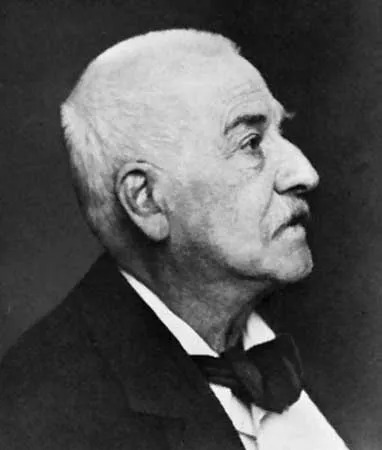

Jacob Burckhardt (1818-1897)
So, the ‘Renaissance’, coined by Jacob Burckhardt. A German writer. The term comes from the French, writing a book about 15th century Italy. Although his book is slightly problematic in the sense that it doesn’t actually recommend or document any art in this so called “art-history” book.
A good example of ‘Renaissance’ art is Botticelli’s ‘Birth of Venus’. As this period of art heavily focuses on retelling classic myths, filled with antique symbolism. A reason a lot of people cite this painting is due to its immense size. A good rule of thumb as an art historian is that if it’s big, it’s important. While the period looks back on Pagan mythology, the religion however doesn’t come back. In fact, more people turn to and cite this period as one of Christian art. Theres a lack of revival of paganism, but there is a revival of form. Observe this statue:


(Right)Sandro Botticelli, The Birth of Venus, tempera on canvas. 172.5 cm x 278.9 cm, Uffizi, Florence
(Left)Aphrodite/Venus, Roman, Metropolitan Museum, New York
The pose is near identical to that of the Classical Antiquity Venus, so we have some semblance and idea of where these artists were drawing their inspiration from. Whereas the ‘Medieval’ was a little bit more complicated. But the ‘Renaissance’ also makes us question as to where the people were looking to for inspiration and evolving their ideas from?
The historical awareness surrounding the Renaissance, highlights to us how they were copying and reviving Classical Antiquity, it’s also safe to say that near always in history we look back on Classical Antiquity and revive aspects of it in some manner/form.

Arch of Constantine
The Renaissance is closely associated with the visual arts. However, it’s more focused on words and the physical surprisingly.
Humanistic Script:
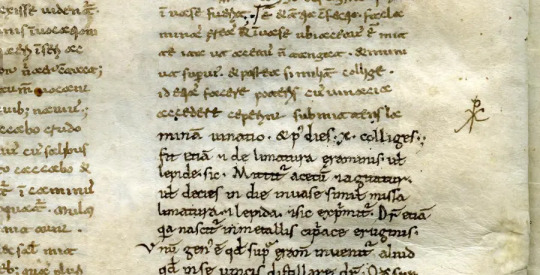
Humanistic script
Ser Giovanni di Piero da Stia, Florence, early fifteenth century
BL Harley 3426
A revival of Roman Latin occurs, and an interest in what people wrote/how they physically wrote. This prevails in the modern day, as Humanistic Script is what influences todays cursive and joined handwriting. The physical print was also important, as the Renaissance was concerned with how you spelled Latin, causing a reformation of vocab/style. Considered Roman handwriting.
While the Roman’s wrote on wax tablets, this left us with quite little to study/go off of. Apart from the in-scriptures on buildings. Surprisingly, although it was a revival of Roman Latin it was modelled on ‘Medieval’ handwriting: the earliest surviving copy is a copy of Vitruvius. Located in the British Library. Carolingian script (aka a Romanising of Medieval handwriting).
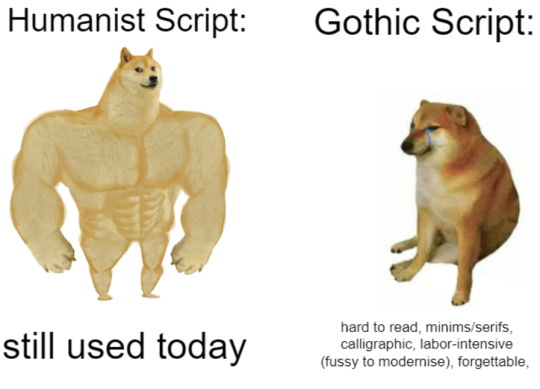


(Left) Gothic script. North Italy, thirteenth century
(Right) Carolingian script An early ninth century copy of Vitruvius, British Library
Humanists were mainly concerned with text/writing.
Leonardo Bruni (tomb analysis): classical poetry doesn’t rhyme, its focus more on flow.
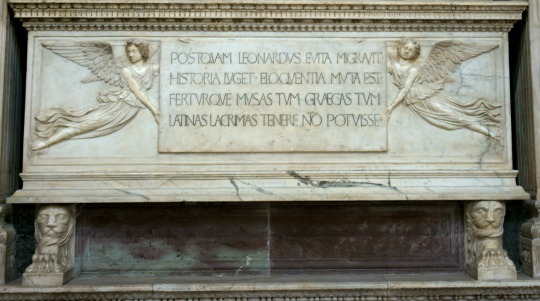
Bruni’s epitaph by Carlo Marsuppini
Literary and scholarly revival is actually the first thing that occurs in the Renaissance, then followed by the visual arts. The scholars worked with people in power or with people whom they shared values with. While most people name Florence as the city of the Renaissance, which it was, they are usually wrong on the city part. Florence was a republic, standing against tyranny.
Text -> Building (Architecture) -> Visual Arts
Looking at these buildings there are clear associations we can begin to link to Renaissance Architecture: simplicity, proportion, understated elegance, columns with entablature, dainty, refined and light.

Filippo Brunelleschi, Foundling Hospital, Florence, 1419-24

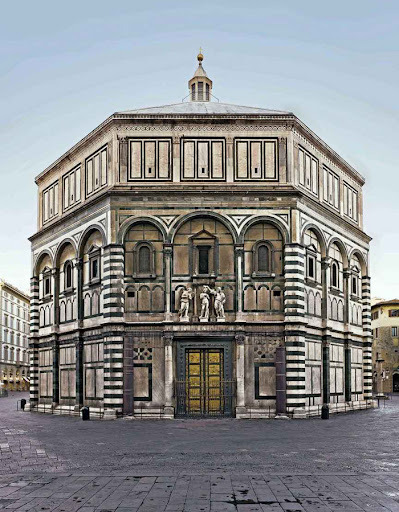
Baptistery, Florence Late 11th or early 12th century
When considering what the Renaissance people were reviving? It’s hard to imagine it’s the Roman buildings (‘Medieval’ post for more information), as that style was far heavier, more solid.
A name that most will recognise, is that of: Filippo Brunelleschi. The most popular architect of the time. Historians believe that rather than looking and reviving Roman Architecture or even studying it, it was Medieval architecture. The aforementioned Baptistery is a prime example of this confusion, considering this building to be a revival of Classical Antiquity when in fact it hails most of its design and inspiration from the Medieval.

Brunelleschi, Old Sacristy, San Lorenzo, c.1418-28 The tomb of Giovanni di Bicci de’ Medici (1360-1429) is at the centre
Florence, especially during this time has an important self-image, and is quietly and privately ruled by the Medici family. You’ll see their name come up a lot in art of this time, as they bolstered their position with the visual arts.
Another important figure, whose name is not as wildly known is Leon Battista Alberti, another Architect, although he dabbled really in Architecture. He was first a scholar and a writer: Humanist.
His work was more focused on borrowing than copying. It’s especially in his architecture that you see the greater details and referencing to Classical Antiquity, rather than in text.

Leon Battista Alberti, Façade of Sant’ Andrea, Mantua, c1470


(Left) Arch of Trajan, Ancona, 115CE
(Right) Arch of Titus, Rome, c80CE
Brunelleschi claims to have used certain styles/ references in his biography, which was written in his late life. However, Historians aren’t too convinced by his claims. Really instead of copying, the Renaissance developed motifs.
Nudes are considered Classical Antiquity.


(Left)Apollo Bonacolsi, called Antico Apollo, 1490s
(Right)Apollo Belvedere Discovered late15th century
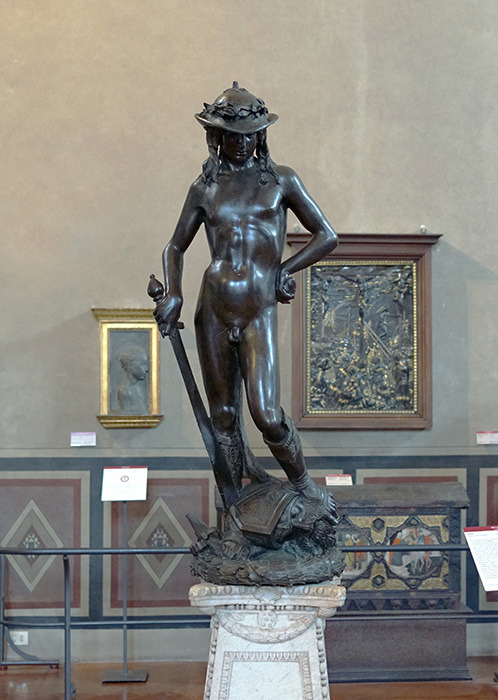
Donatello, David, 1440s?, bronze, 1.58m, Bargello, Florence
Moreover, the bronze sculptures use a specific recipe to achieve a certain finish. The original recipe used by the Romans was lost in history, and thus the Renaissance came up with their own one. And while I reference Donatello’s David, just because it’s popular now, doesn’t necessarily mean it was popular originally/during that time in history.
A revival of Portrait Busts and Side Profile studies occurred:

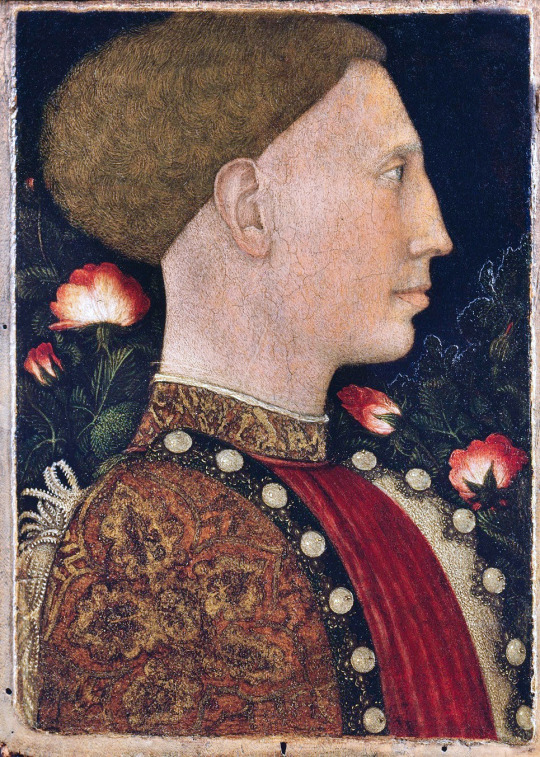
(Left)Antonio Rossellino Portrait bust of Matteo Palmieri, 1468, Bargello, Florence
(Right)Pisanello Portrait of Leonello d’Este, 1441
It’s also in 15th century Florence that we see great technical developments be achieved within art, like Geometrical lines indicating to perspective work, light source and shading, construction. All partially being influenced and being attributed to the Arabic optical studies.
Here in this Masaccio the perspective development can be observed.

Masaccio Trinity, 1420s, Santa Maria Novella, Florence
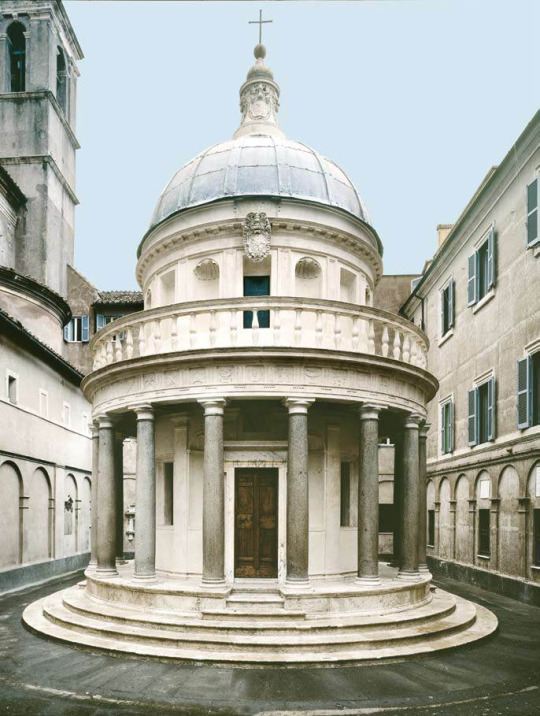
‘High Renaissance’ Bramante, ‘Tempietto’, c.1502, San Pietro in Montorio, Rome
PART 2 OF POST: MASACCIO
#art#art gallery#art hitory#artwork#writing#art tag#essay#paintings#art exhibition#art show#art history#architecture#renaissance#essay writing#lecture#learn#history lesson#historical#history#artists#traditional art#academic writing#writers#writer stuff#writeblr#writers on tumblr#light academia#dark academia#drawings#drawing
3 notes
·
View notes
Text
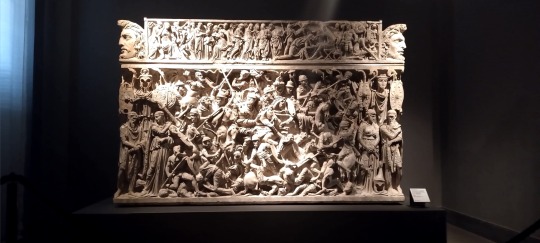
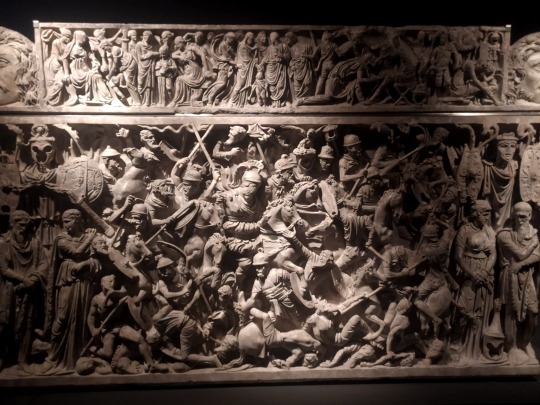

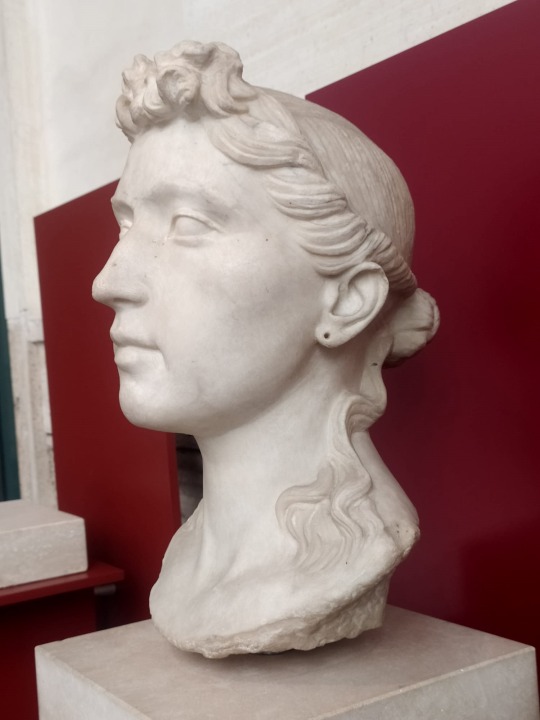


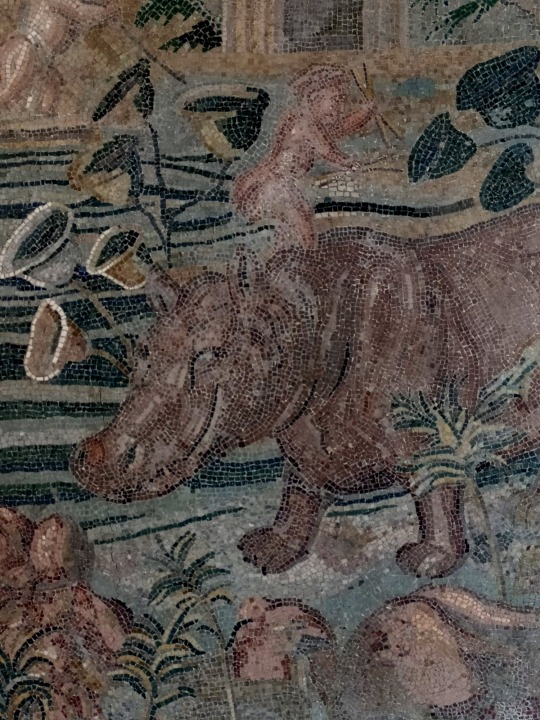
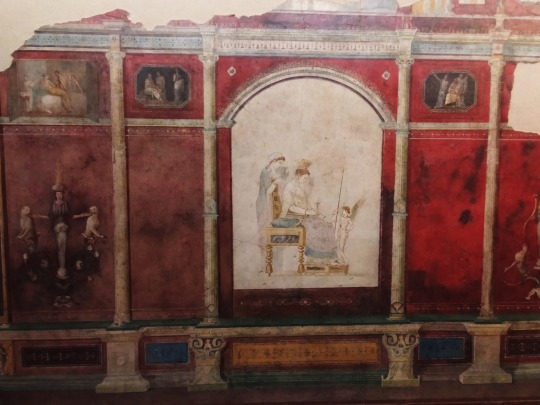
Palazzo Massimo - Rome
Inspired by the magnificent palaces of the 16th century, Palazzo Massimo was built between 1883 and 1887 by the Jesuit priest Massimiliano Massimo, based on a design by Camillo Pistrucci, to house the new Jesuit school. In 1981, the Palazzo was acquired by the Italian Government to become one of the new sites for the National Roman Museum. A radical renovation of the building was entrusted to Costantino Dardi and the Palazzo opened to the public in 1998. Since then, the original installation has been revised and adjusted on a number of occasions, interweaving the various threads of the exhibition using a design based on chronology and theme. By referring to the contexts in which the artefacts were found, this creates the suggestion that different works are jumbled together as in the bustling collections of the 16th century. Now, moving through the rooms of the Palazzo Massimo is like leafing through the pages of a wonderful book. Its four floors contain some of the greatest masterpieces of the entire artistic output of the Roman world: sculptures, reliefs, frescos, mosaics, stuccoes and sarcophagi, originating, like all of the treasures of the National Roman Museum, from excavations undertaken in Rome and the surrounding region from 1870 onwards. The route of the visit begins with the theme of the portrait and its evolution, from exclusive use by the most illustrious citizens in the Archaic Period to the widespread use of portraits among freedmen, from portraits of Greek origin, such as those of Alexander the Great, to those of simple Roman citizens eager for self-celebration at the end of the Republic, like the Tivoli General, and new forms of portraiture linked to the birth of the Empire, such as Augustus dressed as the Pontifex Maximus. Greek originals in marble, such as the Niobid from the Horti Sallustiani (Gardens of Sallust), and in bronze, including the Boxer at Rest and the Hellenistic Prince from the Baths of Constantine, are typical examples of the models of Greek art that came to Rome with the wars of conquest. Continuing the history of portraits in the Imperial Age, the first floor displays the Roman taste for reworkings and copies of ideal sculptures, like the Discobolus of Myron, presented in two well-known reproductions – the Lancellotti Discobolus and the Discobolus of Castel Porziano -, the Sleeping Hermaphroditus, the Aphrodite of Menophantos, and innumerable works depicting gods and mythological figures. However, sculpture also became a means of expression for celebrating victories at the borders of the Empire, such as the monumental Portonaccio sarcophagus, and a method for paying tribute to the greatness of well-known figures in the society of the late Roman Empire, as can be seen from the Acilia and Annona Sarcophagi. The second floor of the Palazzo is dedicated entirely to frescos, stuccoes and mosaics. One element that is fundamental in fully grasping the taste and aesthetic sense of the Roman aristocracy is the superb wall decorations of major archaeological complexes, such as the Villa di Livia in Prima Porta, the Villa Farnesina in Trastevere and the Villa di Termini. The basement level offers a selection from the collections from the National Roman Museum’s Coin and Medal Collection and is dedicated to the economy and the use of money, interpreted through an exhibition of coins, jewellery, precious ornaments and documents relating to the daily cost of life.
#rome#roma#italy#italia#travel#ig#art#photography#love#igersroma#picoftheday#romeitaly#photooftheday#instagood#architecture#travelphotography#lazio#europe#visitrome#igersitalia#paris#history#photo#like#vatican#travelgram#london#instagram#follow#italian
2 notes
·
View notes
Photo

This small bronze coin from the time of Constantine the Great (336-337 CR) shows wear but on the reverse, it reads GLOR-IA EXERC-ITVS and shows two soldiers standing facing, heads turned toward one another, each holding spear and resting hand on grounded shield; between, one standard.
3 notes
·
View notes
Link
Check out this listing I just added to my Poshmark closet: Sterling Silver and Bronze Antiqued Roman Constantine Coin Pendant.
0 notes
Link
Check out this listing I just added to my Poshmark closet: Ancient Coins SS & Bronze Antiqued Roman Constantine l Coin Pendant.
0 notes
Text
🏛️ Unraveling the Wonders of Ancient Roman Currency with Impacto! 🏛️
Step into the realm of ancient wonders as Impacto takes you on a captivating journey through the intriguing world of Roman currency! 💰🌍
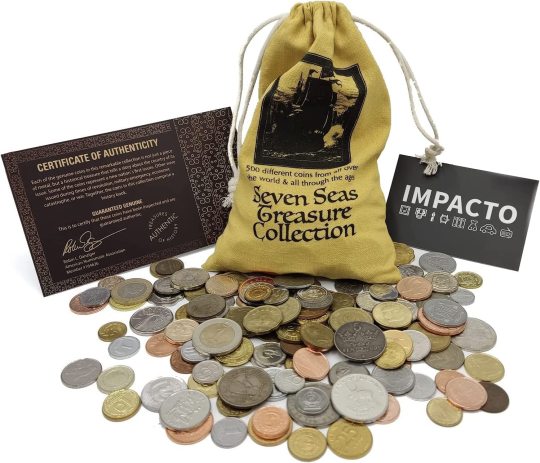
The ancient Romans' monetary system left an indelible mark on history, shaping one of the greatest empires the world has ever seen. From simple barter to a sophisticated coinage system, the evolution of Roman currency was truly remarkable.
Impacto invites you to explore the very foundation of Roman trade and commerce - metal coins! 📜🏺 The Roman Republic introduced bronze coins with distinct denominations, bearing symbols of the gods and goddesses that guided their destiny.
With the rise of the Roman Empire, silver denarii emerged, embodying power and prosperity. These coins featured the emperors' portraits, allowing us to witness their faces across time. The golden aurei, a symbol of unparalleled wealth, reflected the empire's grandeur.
At Impacto, we delve deep into the historical significance of Roman coins. These ancient artifacts transcend their monetary value, offering invaluable insights into Roman politics, culture, and society.
From Emperor Augustus to Constantine the Great, each ruler's reign is etched in numismatic history. 🏆💫 Unearth the stories behind these coins as they passed hands, traversing the vast empire.
Impacto celebrates the legacy of ancient Roman currency, preserving these treasured pieces of history for generations to come. 🌟🏛️
0 notes
Photo
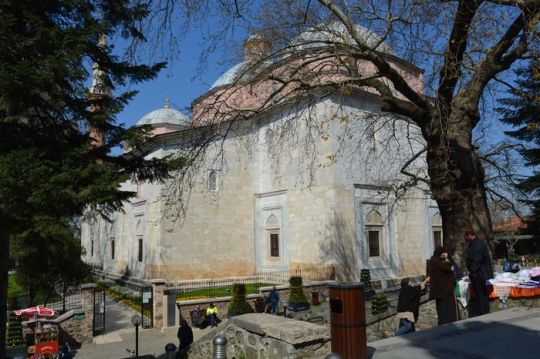
The Colossus or Built Column
The Colossus, or Built Column, an obelisk of masonry, originally 94 feet high. The exact date of its erection is not known; but a Greek inscrip tion on it states that it was restored by Constantine VII. (Porphyrogenitus), who lived in the tenth century A.D. As is evinced by the rivet-holes in the stones composing it, this monument once had a bronze sheathing. This was stripped off by the Latins when they took the city, and coined into money.
Until 1856 the lower portion of these three monuments was hidden under a gradual accumulation of stones and earth. During the Crimean War, Sir C. Newton, of the British Museum, received permission from the Ottoman Government to excavate them to the base of their pedestals. Afterwards a wall was built round reaching to the present level of the At Maidan, and this wall was surmounted by an iron railing. So the monuments rise from a pit, whose floor is on the same level as the ancient surface of the Spina.
The Pillar of Theodosius, of granite, with a Corinthian capital, some 49 feet high, stands in the Seraglio grounds, near Seraglio Point. Its Latin inscription, now scarcely legible, runs— Fortunse reduci ob devictos Gothos and seems to denote that the pillar was erected to commemorate a victory over the Goths.
The Porphyry, or Burnt Column, stands in the street called Divan Yolu, close to the tomb of Sultan Mahmud, on the site of what was the Forum of Constantine. The column was originally 120 feet high, but only 90 feet of it remain now. It is composed of six blocks of porphyry, so cleverly joined as to look like a monolith. It formerly supported a bronze statue of Apollo, altered to represent Constantine, and brought by him from Rome, like the column itself. The white marble now seen on it was added when the column was restored by Emmanuel Comnenus, after the two upper blocks had been destroyed by lightning. The frequent fires in its neighbourhood have considerably injured this monument, and to them is due the origin of the title Burnt Column, by which it is now known. Upon the upper part of the column is the inscription—
0 notes
Photo

The Colossus or Built Column
The Colossus, or Built Column, an obelisk of masonry, originally 94 feet high. The exact date of its erection is not known; but a Greek inscrip tion on it states that it was restored by Constantine VII. (Porphyrogenitus), who lived in the tenth century A.D. As is evinced by the rivet-holes in the stones composing it, this monument once had a bronze sheathing. This was stripped off by the Latins when they took the city, and coined into money.
Until 1856 the lower portion of these three monuments was hidden under a gradual accumulation of stones and earth. During the Crimean War, Sir C. Newton, of the British Museum, received permission from the Ottoman Government to excavate them to the base of their pedestals. Afterwards a wall was built round reaching to the present level of the At Maidan, and this wall was surmounted by an iron railing. So the monuments rise from a pit, whose floor is on the same level as the ancient surface of the Spina.
The Pillar of Theodosius, of granite, with a Corinthian capital, some 49 feet high, stands in the Seraglio grounds, near Seraglio Point. Its Latin inscription, now scarcely legible, runs— Fortunse reduci ob devictos Gothos and seems to denote that the pillar was erected to commemorate a victory over the Goths.
The Porphyry, or Burnt Column, stands in the street called Divan Yolu, close to the tomb of Sultan Mahmud, on the site of what was the Forum of Constantine. The column was originally 120 feet high, but only 90 feet of it remain now. It is composed of six blocks of porphyry, so cleverly joined as to look like a monolith. It formerly supported a bronze statue of Apollo, altered to represent Constantine, and brought by him from Rome, like the column itself. The white marble now seen on it was added when the column was restored by Emmanuel Comnenus, after the two upper blocks had been destroyed by lightning. The frequent fires in its neighbourhood have considerably injured this monument, and to them is due the origin of the title Burnt Column, by which it is now known. Upon the upper part of the column is the inscription—
0 notes
Photo
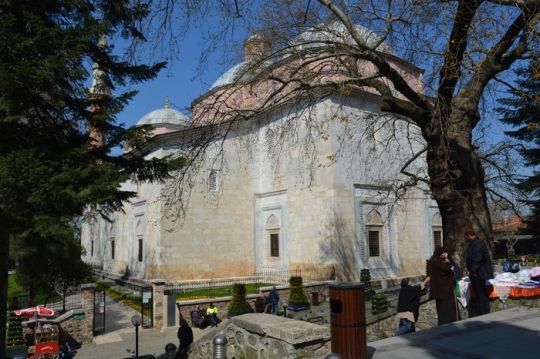
The Colossus or Built Column
The Colossus, or Built Column, an obelisk of masonry, originally 94 feet high. The exact date of its erection is not known; but a Greek inscrip tion on it states that it was restored by Constantine VII. (Porphyrogenitus), who lived in the tenth century A.D. As is evinced by the rivet-holes in the stones composing it, this monument once had a bronze sheathing. This was stripped off by the Latins when they took the city, and coined into money.
Until 1856 the lower portion of these three monuments was hidden under a gradual accumulation of stones and earth. During the Crimean War, Sir C. Newton, of the British Museum, received permission from the Ottoman Government to excavate them to the base of their pedestals. Afterwards a wall was built round reaching to the present level of the At Maidan, and this wall was surmounted by an iron railing. So the monuments rise from a pit, whose floor is on the same level as the ancient surface of the Spina.
The Pillar of Theodosius, of granite, with a Corinthian capital, some 49 feet high, stands in the Seraglio grounds, near Seraglio Point. Its Latin inscription, now scarcely legible, runs— Fortunse reduci ob devictos Gothos and seems to denote that the pillar was erected to commemorate a victory over the Goths.
The Porphyry, or Burnt Column, stands in the street called Divan Yolu, close to the tomb of Sultan Mahmud, on the site of what was the Forum of Constantine. The column was originally 120 feet high, but only 90 feet of it remain now. It is composed of six blocks of porphyry, so cleverly joined as to look like a monolith. It formerly supported a bronze statue of Apollo, altered to represent Constantine, and brought by him from Rome, like the column itself. The white marble now seen on it was added when the column was restored by Emmanuel Comnenus, after the two upper blocks had been destroyed by lightning. The frequent fires in its neighbourhood have considerably injured this monument, and to them is due the origin of the title Burnt Column, by which it is now known. Upon the upper part of the column is the inscription—
0 notes
Photo

The Colossus or Built Column
The Colossus, or Built Column, an obelisk of masonry, originally 94 feet high. The exact date of its erection is not known; but a Greek inscrip tion on it states that it was restored by Constantine VII. (Porphyrogenitus), who lived in the tenth century A.D. As is evinced by the rivet-holes in the stones composing it, this monument once had a bronze sheathing. This was stripped off by the Latins when they took the city, and coined into money.
Until 1856 the lower portion of these three monuments was hidden under a gradual accumulation of stones and earth. During the Crimean War, Sir C. Newton, of the British Museum, received permission from the Ottoman Government to excavate them to the base of their pedestals. Afterwards a wall was built round reaching to the present level of the At Maidan, and this wall was surmounted by an iron railing. So the monuments rise from a pit, whose floor is on the same level as the ancient surface of the Spina.
The Pillar of Theodosius, of granite, with a Corinthian capital, some 49 feet high, stands in the Seraglio grounds, near Seraglio Point. Its Latin inscription, now scarcely legible, runs— Fortunse reduci ob devictos Gothos and seems to denote that the pillar was erected to commemorate a victory over the Goths.
The Porphyry, or Burnt Column, stands in the street called Divan Yolu, close to the tomb of Sultan Mahmud, on the site of what was the Forum of Constantine. The column was originally 120 feet high, but only 90 feet of it remain now. It is composed of six blocks of porphyry, so cleverly joined as to look like a monolith. It formerly supported a bronze statue of Apollo, altered to represent Constantine, and brought by him from Rome, like the column itself. The white marble now seen on it was added when the column was restored by Emmanuel Comnenus, after the two upper blocks had been destroyed by lightning. The frequent fires in its neighbourhood have considerably injured this monument, and to them is due the origin of the title Burnt Column, by which it is now known. Upon the upper part of the column is the inscription—
0 notes
Text
New Post has been published on Mirela
The Colossus or Built Column
The Colossus, or Built Column, an obelisk of masonry, originally 94 feet high. The exact date of its erection is not known; but a Greek inscrip tion on it states that it was restored by Constantine VII. (Porphyrogenitus), who lived in the tenth century A.D. As is evinced by the rivet-holes in the stones composing it, this monument once had a bronze sheathing. This was stripped off by the Latins when they took the city, and coined into money.
Until 1856 the lower portion of these three monuments was hidden under a gradual accumulation of stones and earth. During the Crimean War, Sir C. Newton, of the British Museum, received permission from the Ottoman Government to excavate them to the base of their pedestals. Afterwards a wall was built round reaching to the present level of the At Maidan, and this wall was surmounted by an iron railing. So the monuments rise from a pit, whose floor is on the same level as the ancient surface of the Spina.
The Pillar of Theodosius, of granite, with a Corinthian capital, some 49 feet high, stands in the Seraglio grounds, near Seraglio Point. Its Latin inscription, now scarcely legible, runs— Fortunse reduci ob devictos Gothos and seems to denote that the pillar was erected to commemorate a victory over the Goths.
The Porphyry, or Burnt Column, stands in the street called Divan Yolu, close to the tomb of Sultan Mahmud, on the site of what was the Forum of Constantine. The column was originally 120 feet high, but only 90 feet of it remain now. It is composed of six blocks of porphyry, so cleverly joined as to look like a monolith. It formerly supported a bronze statue of Apollo, altered to represent Constantine, and brought by him from Rome, like the column itself. The white marble now seen on it was added when the column was restored by Emmanuel Comnenus, after the two upper blocks had been destroyed by lightning. The frequent fires in its neighbourhood have considerably injured this monument, and to them is due the origin of the title Burnt Column, by which it is now known. Upon the upper part of the column is the inscription—
0 notes
Photo

The Colossus or Built Column
The Colossus, or Built Column, an obelisk of masonry, originally 94 feet high. The exact date of its erection is not known; but a Greek inscrip tion on it states that it was restored by Constantine VII. (Porphyrogenitus), who lived in the tenth century A.D. As is evinced by the rivet-holes in the stones composing it, this monument once had a bronze sheathing. This was stripped off by the Latins when they took the city, and coined into money.
Until 1856 the lower portion of these three monuments was hidden under a gradual accumulation of stones and earth. During the Crimean War, Sir C. Newton, of the British Museum, received permission from the Ottoman Government to excavate them to the base of their pedestals. Afterwards a wall was built round reaching to the present level of the At Maidan, and this wall was surmounted by an iron railing. So the monuments rise from a pit, whose floor is on the same level as the ancient surface of the Spina.
The Pillar of Theodosius, of granite, with a Corinthian capital, some 49 feet high, stands in the Seraglio grounds, near Seraglio Point. Its Latin inscription, now scarcely legible, runs— Fortunse reduci ob devictos Gothos and seems to denote that the pillar was erected to commemorate a victory over the Goths.
The Porphyry, or Burnt Column, stands in the street called Divan Yolu, close to the tomb of Sultan Mahmud, on the site of what was the Forum of Constantine. The column was originally 120 feet high, but only 90 feet of it remain now. It is composed of six blocks of porphyry, so cleverly joined as to look like a monolith. It formerly supported a bronze statue of Apollo, altered to represent Constantine, and brought by him from Rome, like the column itself. The white marble now seen on it was added when the column was restored by Emmanuel Comnenus, after the two upper blocks had been destroyed by lightning. The frequent fires in its neighbourhood have considerably injured this monument, and to them is due the origin of the title Burnt Column, by which it is now known. Upon the upper part of the column is the inscription—
0 notes
Photo

The Colossus or Built Column
The Colossus, or Built Column, an obelisk of masonry, originally 94 feet high. The exact date of its erection is not known; but a Greek inscrip tion on it states that it was restored by Constantine VII. (Porphyrogenitus), who lived in the tenth century A.D. As is evinced by the rivet-holes in the stones composing it, this monument once had a bronze sheathing. This was stripped off by the Latins when they took the city, and coined into money.
Until 1856 the lower portion of these three monuments was hidden under a gradual accumulation of stones and earth. During the Crimean War, Sir C. Newton, of the British Museum, received permission from the Ottoman Government to excavate them to the base of their pedestals. Afterwards a wall was built round reaching to the present level of the At Maidan, and this wall was surmounted by an iron railing. So the monuments rise from a pit, whose floor is on the same level as the ancient surface of the Spina.
The Pillar of Theodosius, of granite, with a Corinthian capital, some 49 feet high, stands in the Seraglio grounds, near Seraglio Point. Its Latin inscription, now scarcely legible, runs— Fortunse reduci ob devictos Gothos and seems to denote that the pillar was erected to commemorate a victory over the Goths.
The Porphyry, or Burnt Column, stands in the street called Divan Yolu, close to the tomb of Sultan Mahmud, on the site of what was the Forum of Constantine. The column was originally 120 feet high, but only 90 feet of it remain now. It is composed of six blocks of porphyry, so cleverly joined as to look like a monolith. It formerly supported a bronze statue of Apollo, altered to represent Constantine, and brought by him from Rome, like the column itself. The white marble now seen on it was added when the column was restored by Emmanuel Comnenus, after the two upper blocks had been destroyed by lightning. The frequent fires in its neighbourhood have considerably injured this monument, and to them is due the origin of the title Burnt Column, by which it is now known. Upon the upper part of the column is the inscription—
0 notes
Photo

The Colossus or Built Column
The Colossus, or Built Column, an obelisk of masonry, originally 94 feet high. The exact date of its erection is not known; but a Greek inscrip tion on it states that it was restored by Constantine VII. (Porphyrogenitus), who lived in the tenth century A.D. As is evinced by the rivet-holes in the stones composing it, this monument once had a bronze sheathing. This was stripped off by the Latins when they took the city, and coined into money.
Until 1856 the lower portion of these three monuments was hidden under a gradual accumulation of stones and earth. During the Crimean War, Sir C. Newton, of the British Museum, received permission from the Ottoman Government to excavate them to the base of their pedestals. Afterwards a wall was built round reaching to the present level of the At Maidan, and this wall was surmounted by an iron railing. So the monuments rise from a pit, whose floor is on the same level as the ancient surface of the Spina.
The Pillar of Theodosius, of granite, with a Corinthian capital, some 49 feet high, stands in the Seraglio grounds, near Seraglio Point. Its Latin inscription, now scarcely legible, runs— Fortunse reduci ob devictos Gothos and seems to denote that the pillar was erected to commemorate a victory over the Goths.
The Porphyry, or Burnt Column, stands in the street called Divan Yolu, close to the tomb of Sultan Mahmud, on the site of what was the Forum of Constantine. The column was originally 120 feet high, but only 90 feet of it remain now. It is composed of six blocks of porphyry, so cleverly joined as to look like a monolith. It formerly supported a bronze statue of Apollo, altered to represent Constantine, and brought by him from Rome, like the column itself. The white marble now seen on it was added when the column was restored by Emmanuel Comnenus, after the two upper blocks had been destroyed by lightning. The frequent fires in its neighbourhood have considerably injured this monument, and to them is due the origin of the title Burnt Column, by which it is now known. Upon the upper part of the column is the inscription—
0 notes